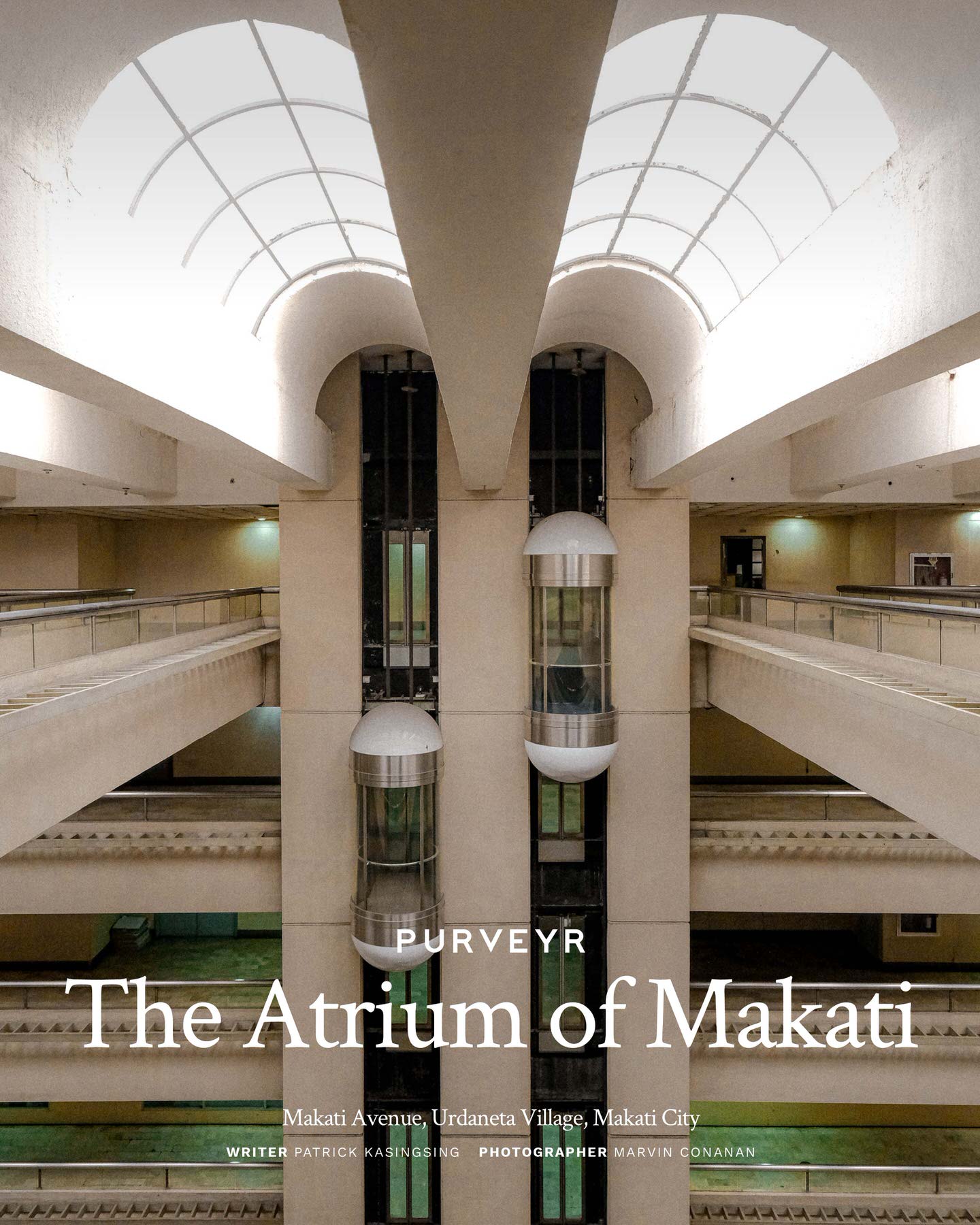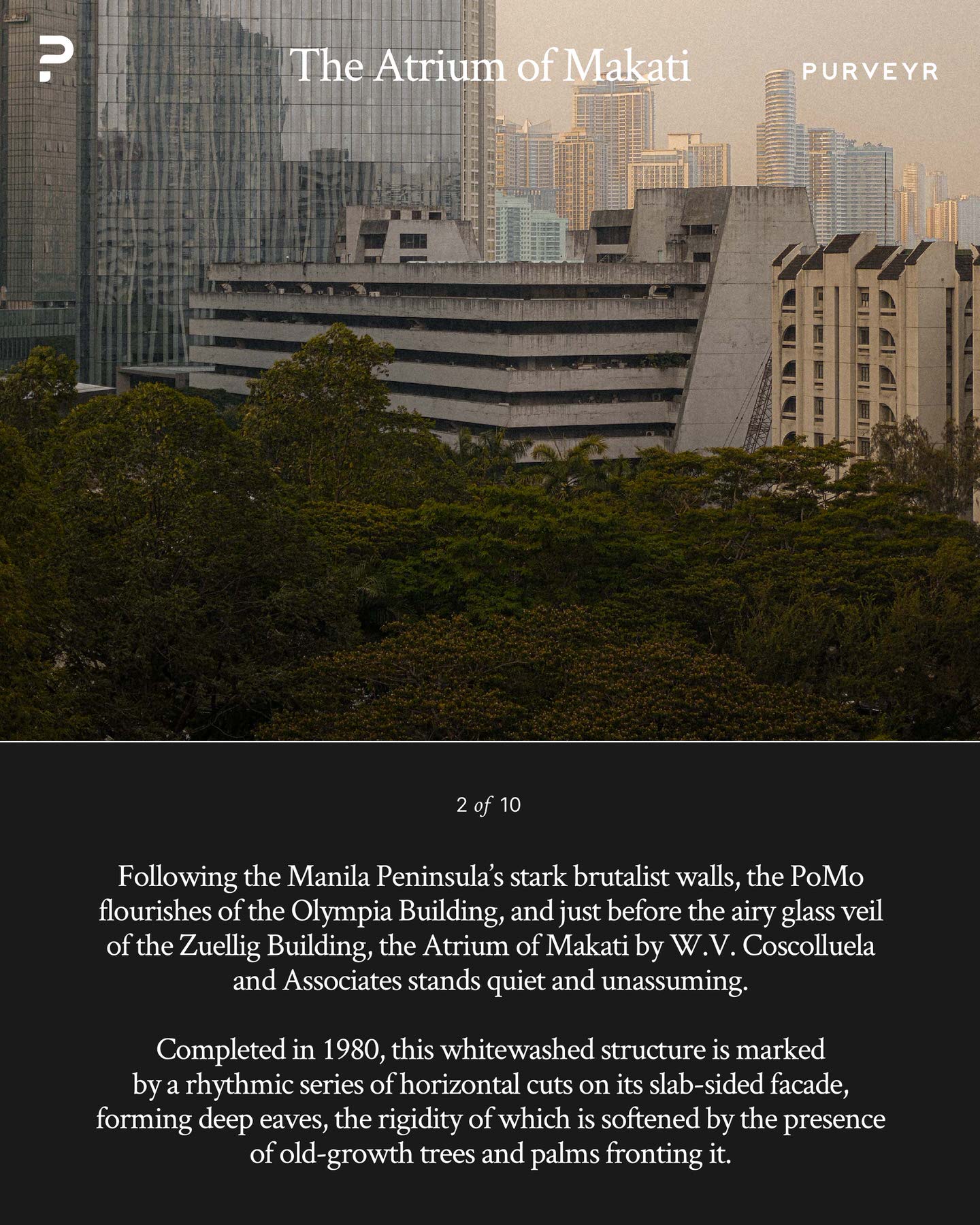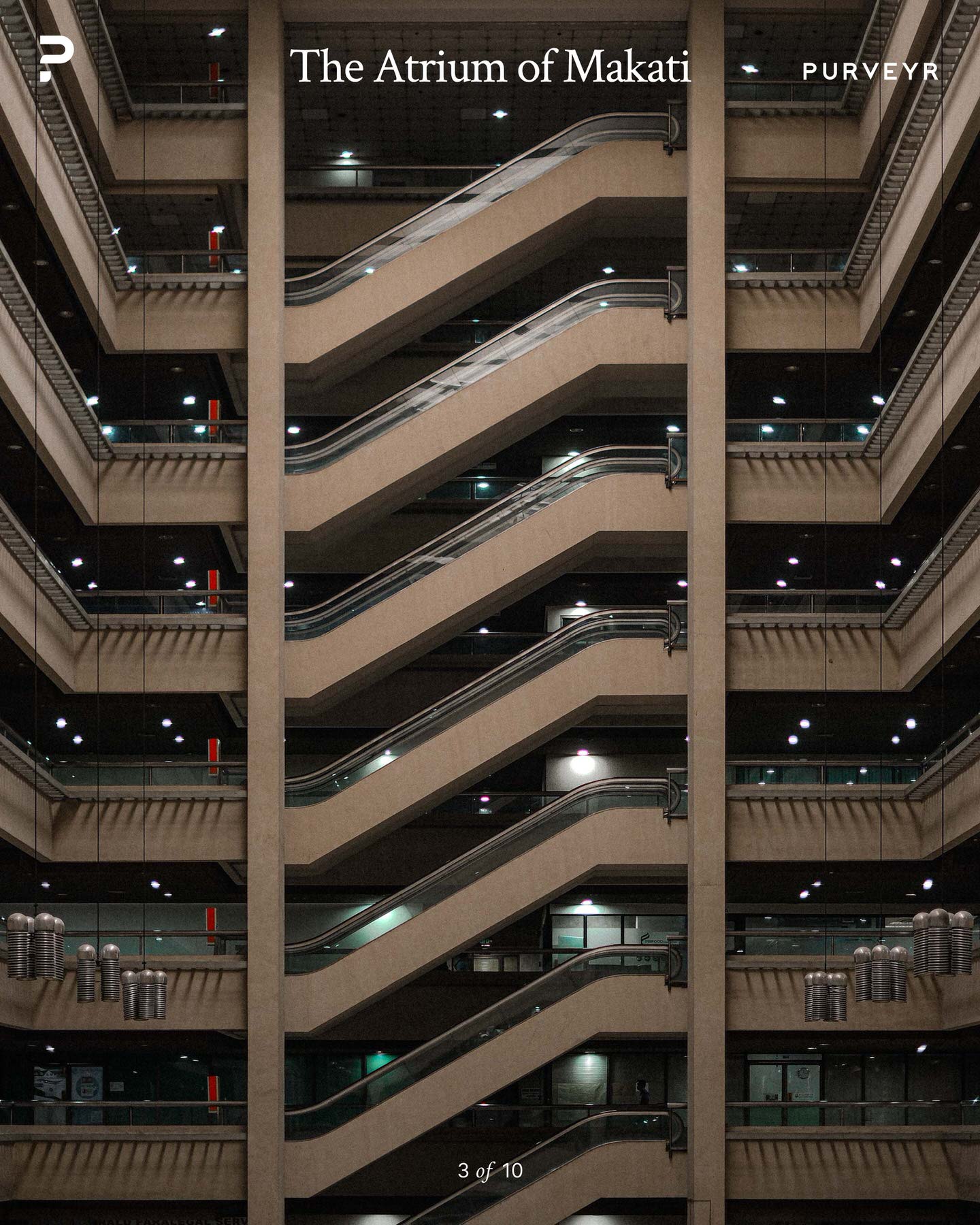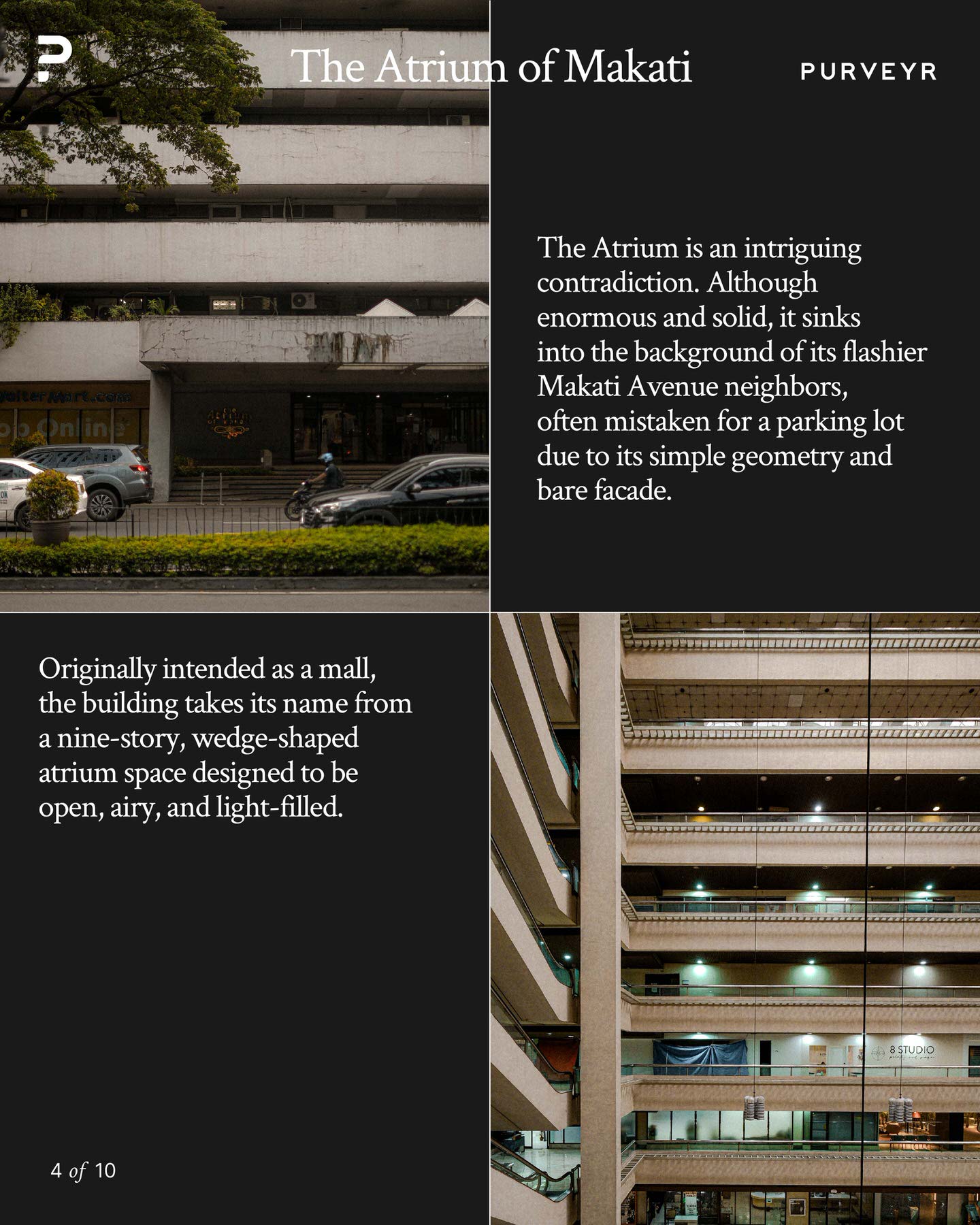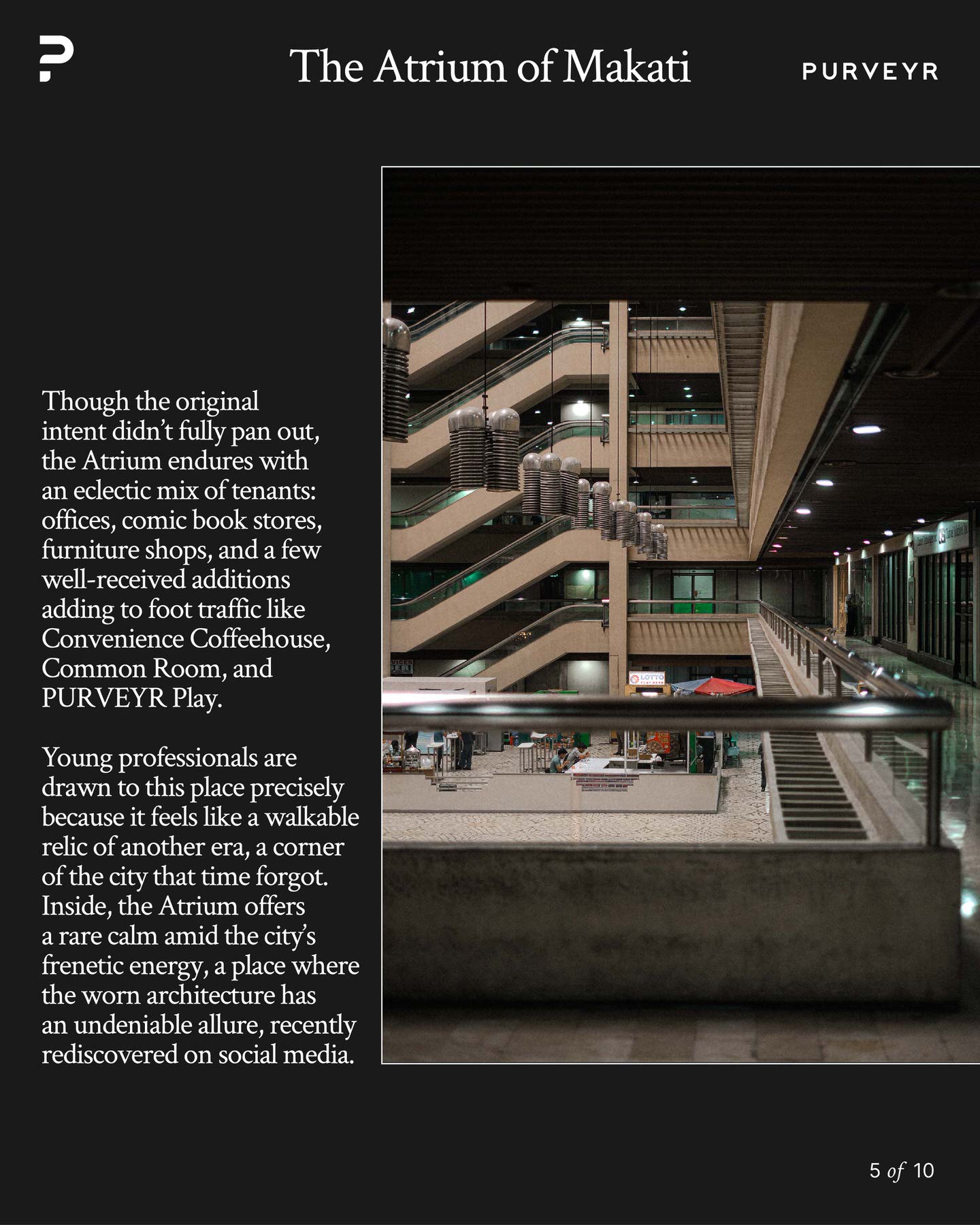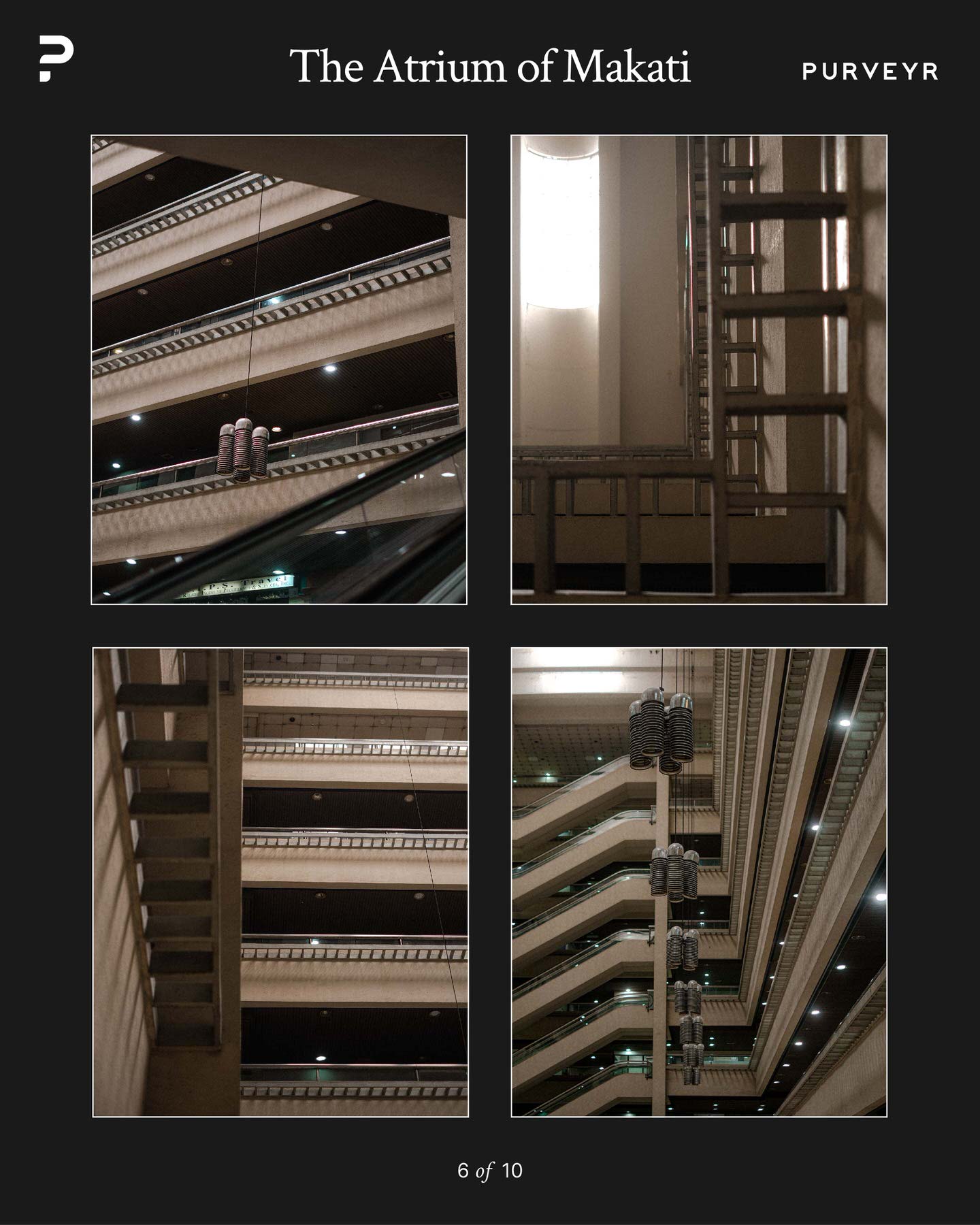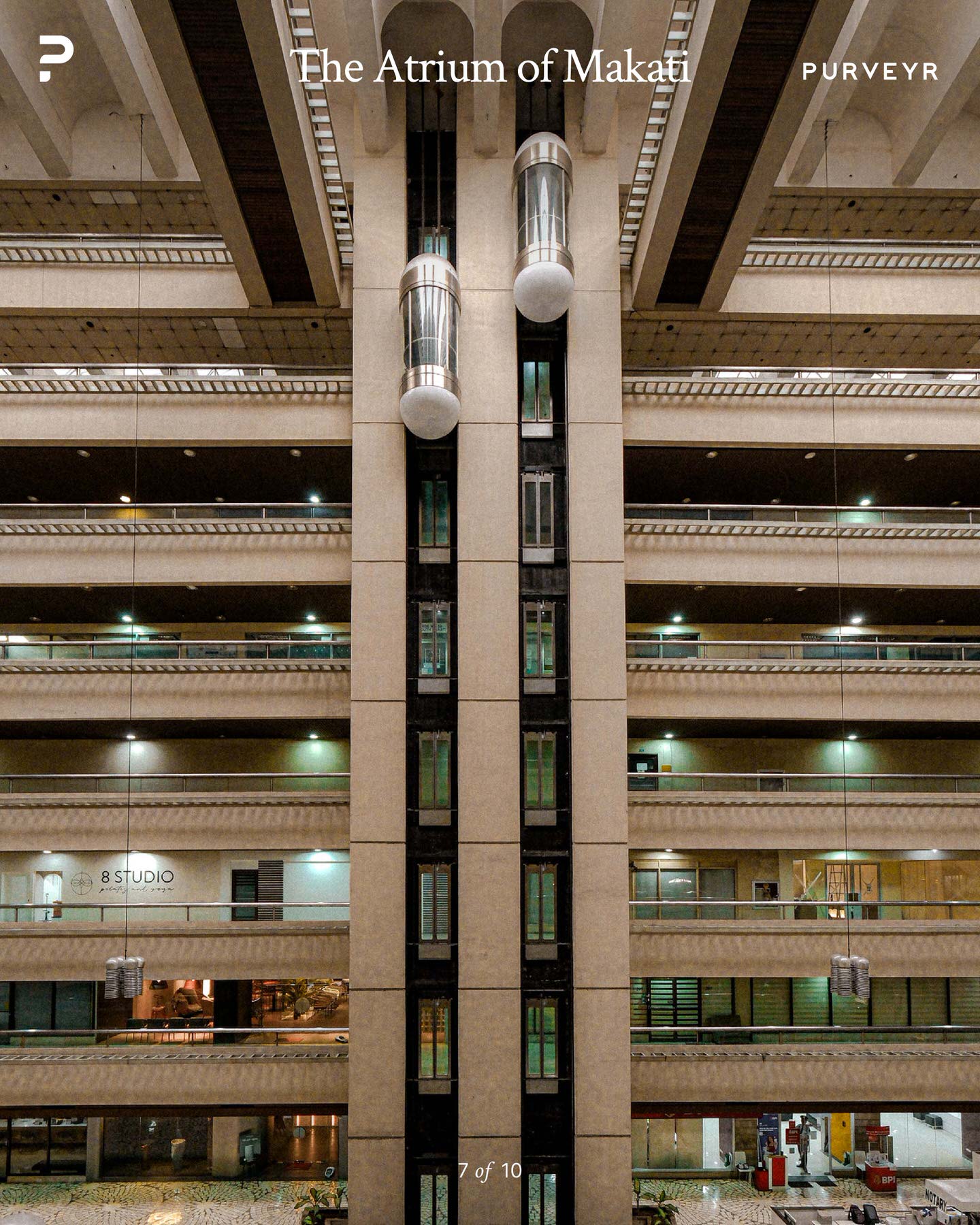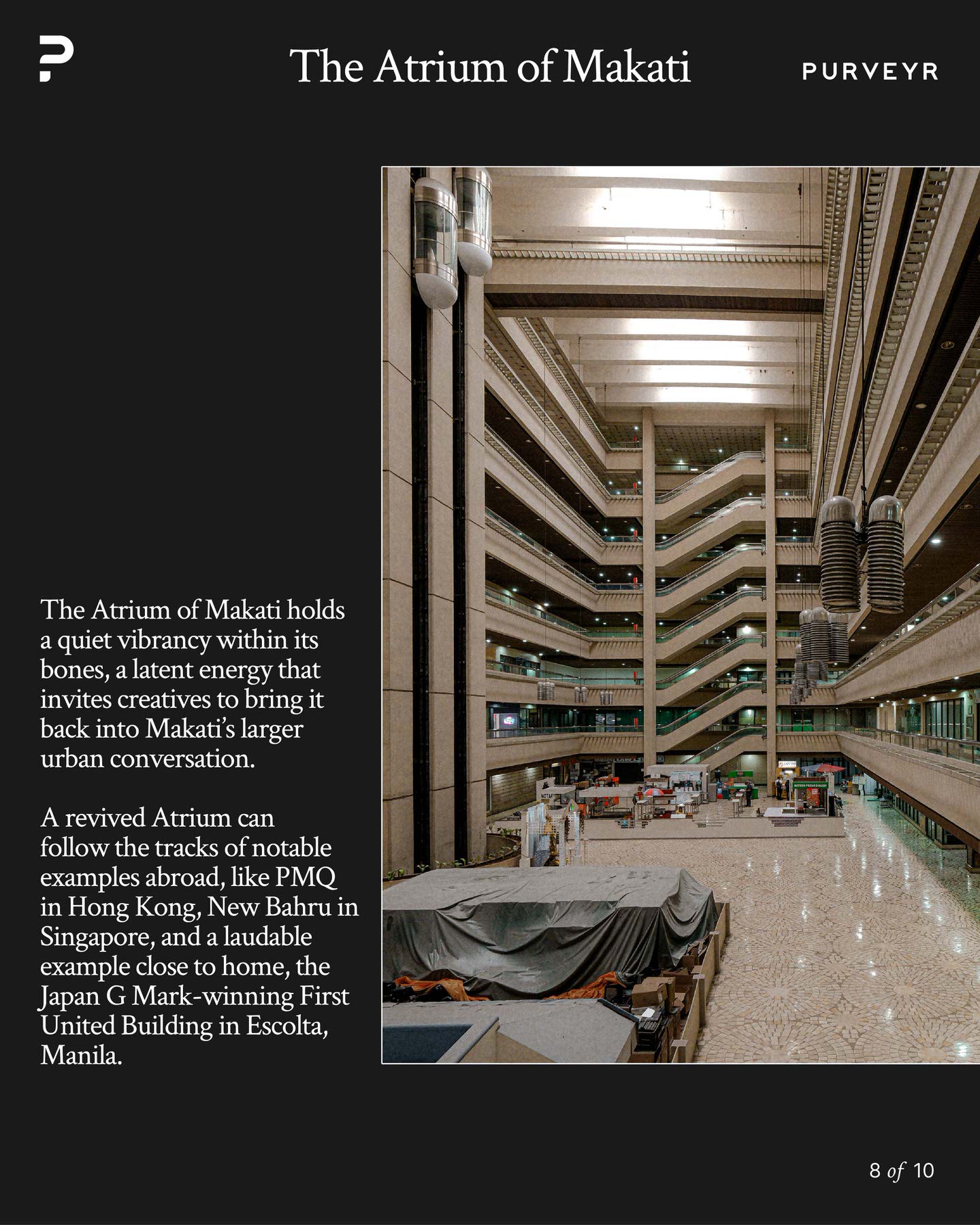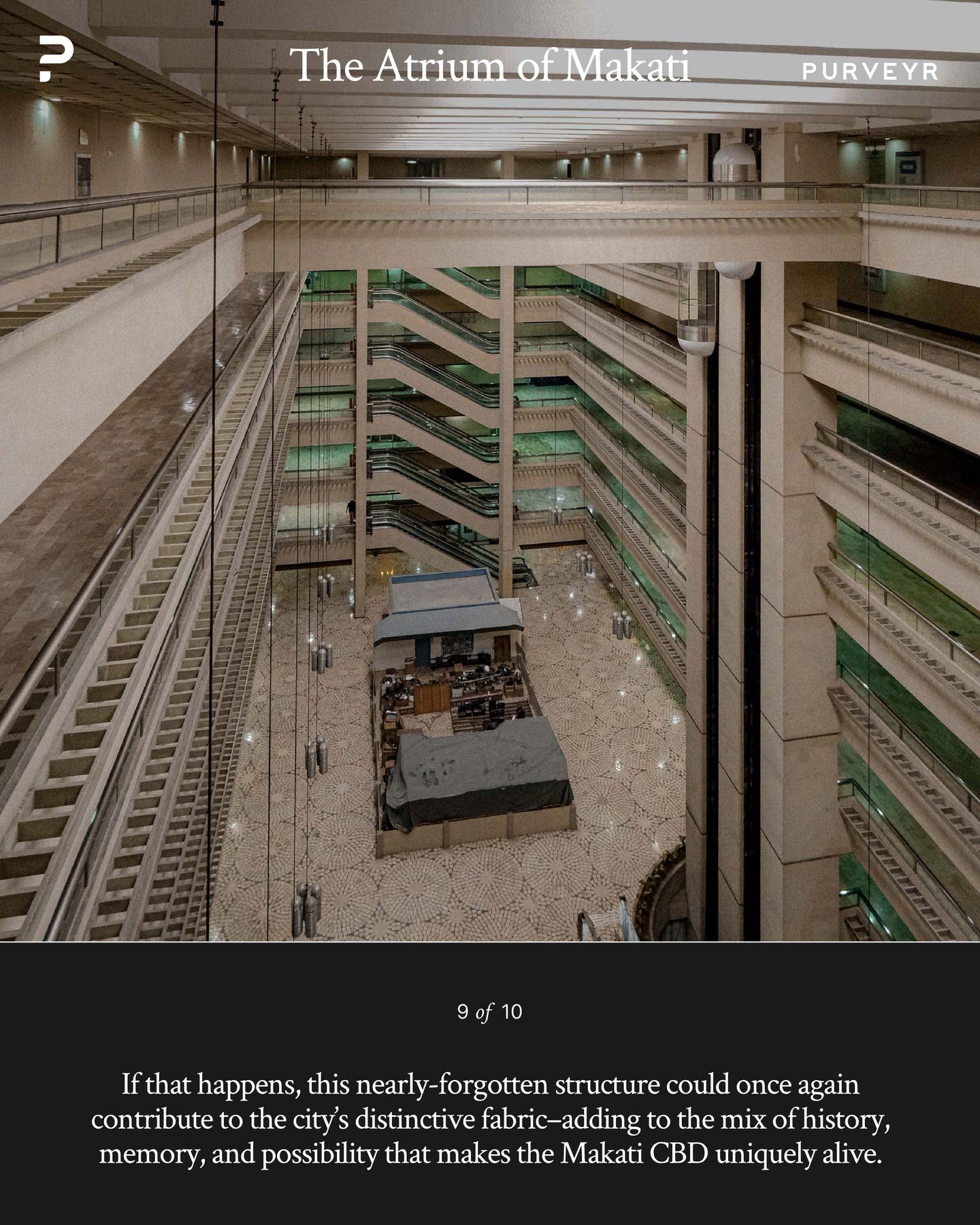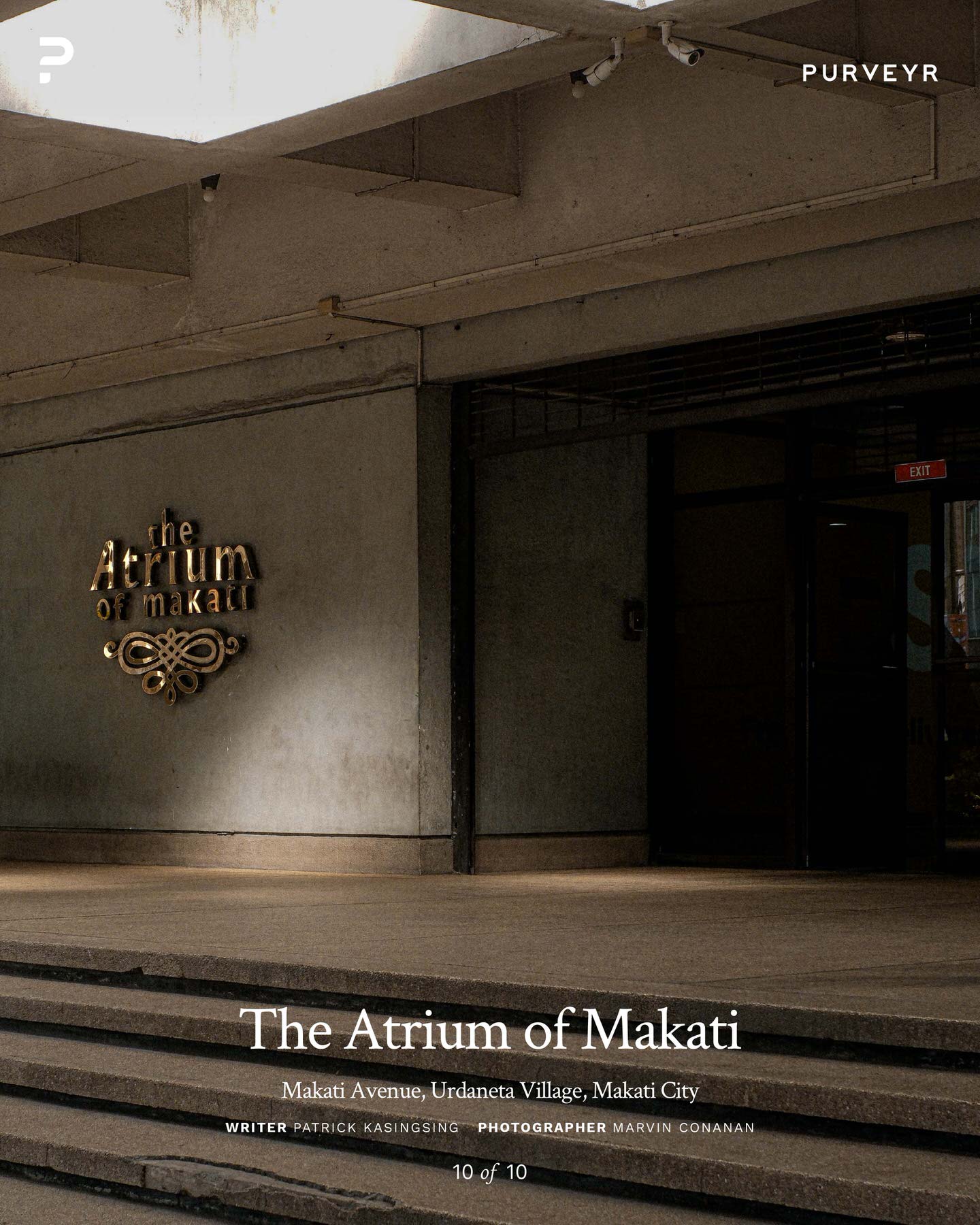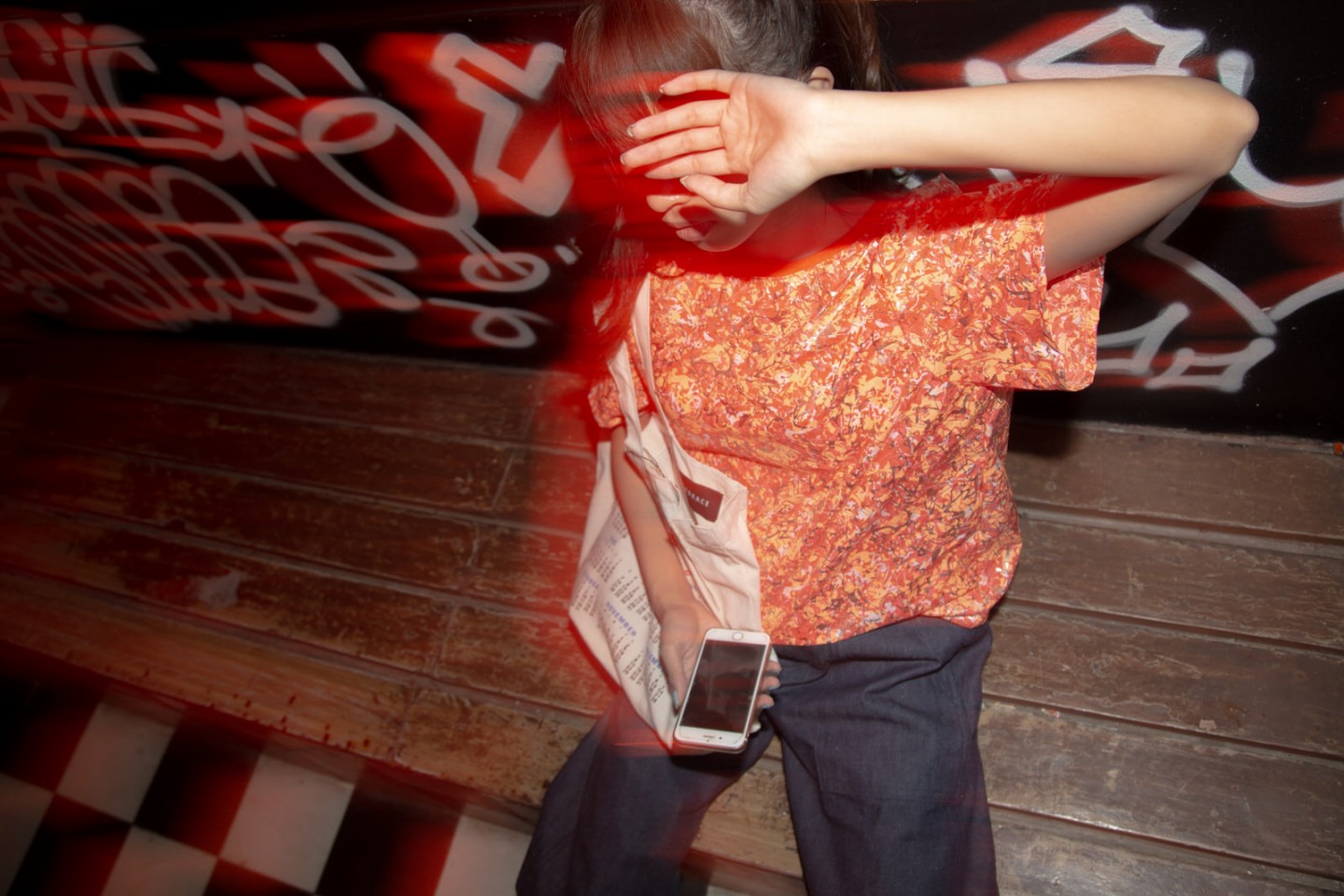Following the Manila Peninsula’s stark brutalist walls, the PoMo flourishes of the Olympia Building, and just before the airy glass veil of the Zuellig Building, the Atrium of Makati by W.V. Coscolluela and Associates stands quiet and unassuming. Completed in 1980, this whitewashed structure is marked by a rhythmic series of horizontal cuts on its slab-sided facade, forming deep eaves, the rigidity of which is softened by the presence of old-growth trees and palms fronting it.
The Atrium is an intriguing contradiction. Although enormous and solid, the building sinks into the background of its flashier Makati Avenue neighbors, often mistaken for a parking lot due to its simple geometry and bare facade. Its quiet, nearly-forgotten exterior hides an interior that once buzzed with ambition. Originally intended as a mall, the building takes its name from a nine-story, wedge-shaped atrium space designed to be open, airy, and light-filled. It arose in the 80s when some of the country’s largest malls were also reaching completion.
The complex may be nearly empty, but the architecture still hums with a subtle energy. The ground-floor tilework remains pristine, ironically preserved by low foot traffic. With their space-age aesthetic, the pill-shaped capsule lamps that hang above the atrium still draw the eye, though their metallic sheen has dulled with time. The once-active bubble lifts now stand silent; their glass walls dusty, but it’s not hard to imagine them alit and in motion, giving a glimpse of the building’s original dynamism.
Though the original intent didn’t fully pan out, the Atrium endures with an eclectic mix of tenants: offices, comic bookstores, furniture shops, and a few well-received additions adding to foot traffic like Convenience Coffeehouse, Common Room, and PURVEYR Play. Young professionals are drawn to this place precisely because it feels like a walkable relic of another era, a corner of the city that time forgot. Inside, the Atrium offers a rare calm amid the city’s frenetic energy, a place where the worn architecture has an undeniable allure, recently rediscovered on social media.
The Atrium of Makati holds a quiet vibrancy within its bones, a latent energy that invites creatives to bring it back into Makati’s larger urban conversation. It is a space seemingly ripe for adaptive reuse by a new generation buzzing with new ideas to reactivate tired walls that have yet to see the promise and possibility they were meant to foster. A revived Atrium can follow the tracks of notable examples abroad, like PMQ in Hong Kong, New Bahru in Singapore, and a laudable example close to home, the Japan G Mark-winning First United Building in Escolta, Manila.
If that happens, this nearly forgotten structure could once again contribute to the city’s distinctive fabric, adding to the mix of history, memory, and possibility that makes the Makati CBD uniquely alive.
CREDITS
WRITER Patrick Kasingsing
EDITOR Tricia Quintero
PHOTOGRAPHER Marvin Conanan
DESIGNER Bea Pangandian
SUPPORT PURVEYR
If you like this story and would love to read more like it, we hope you can support us for as low as ₱100. This will help us continue what we do and feature more stories of creative Filipinos. You can subscribe to the fund or send us a tip.

